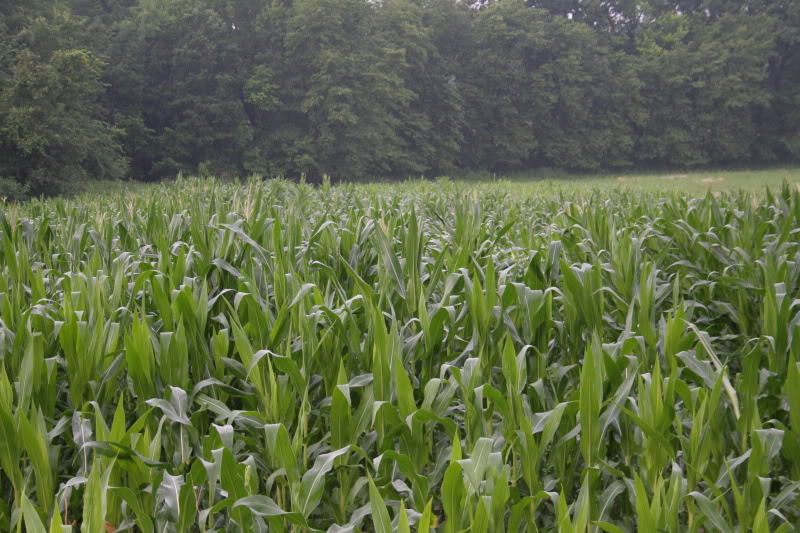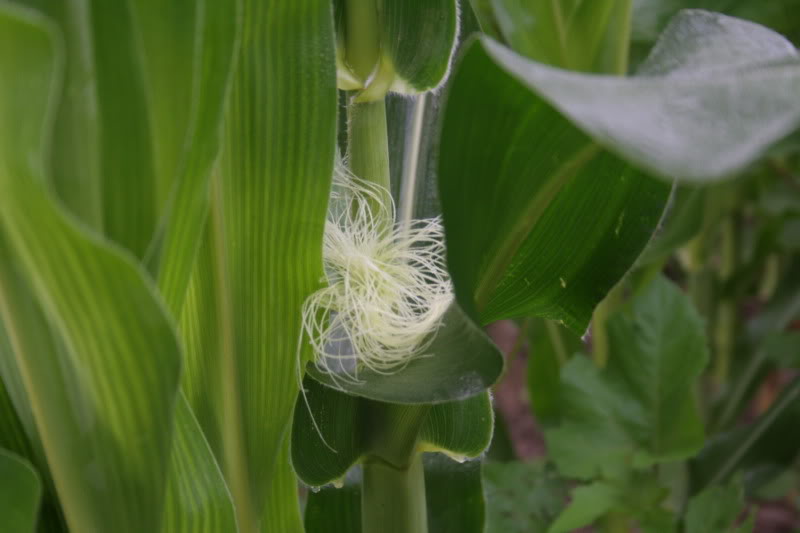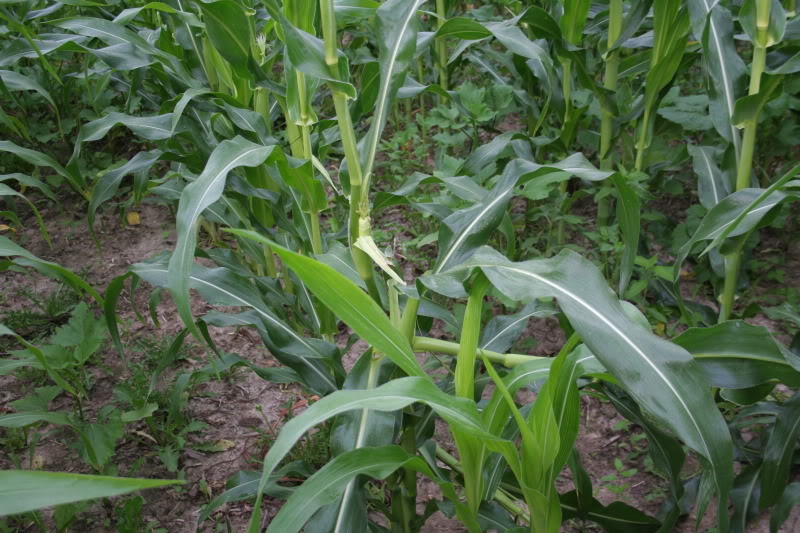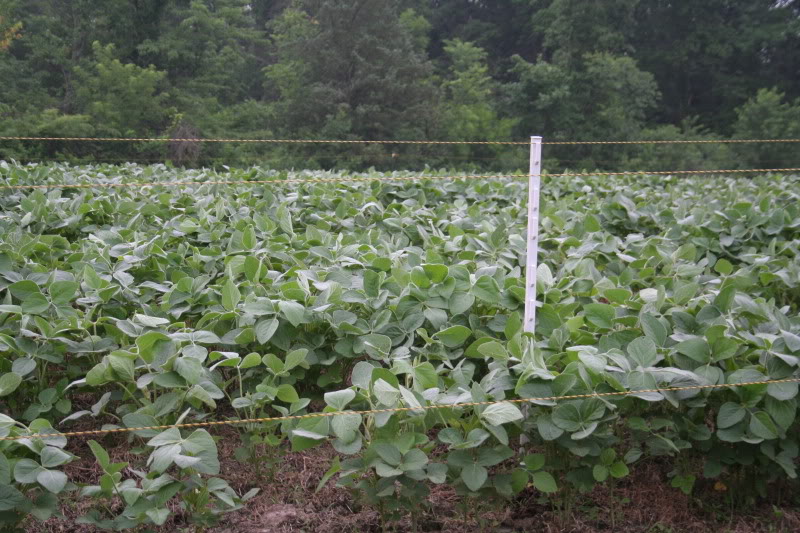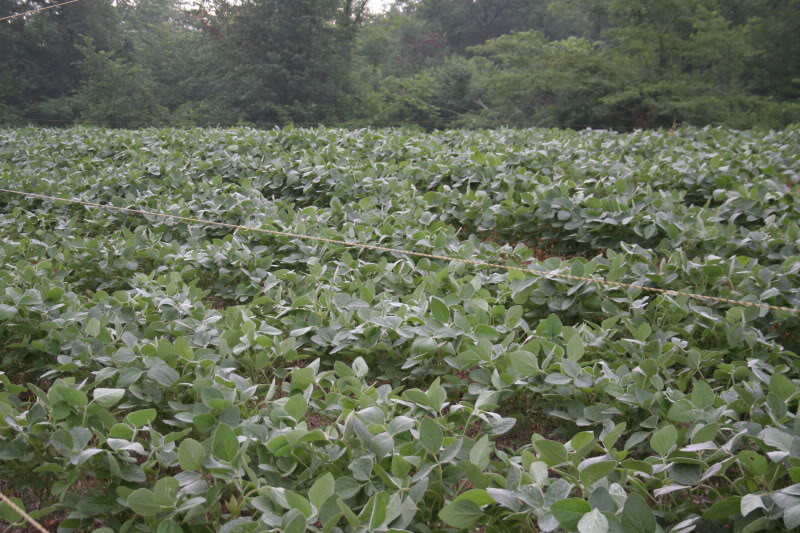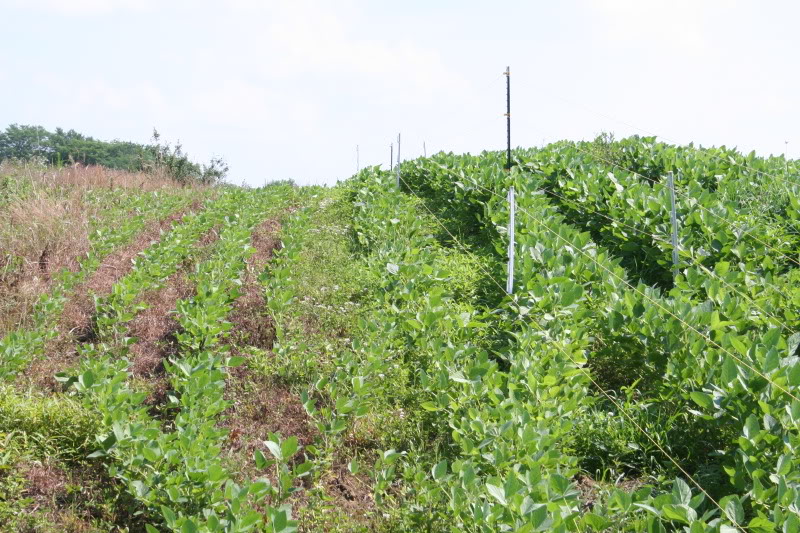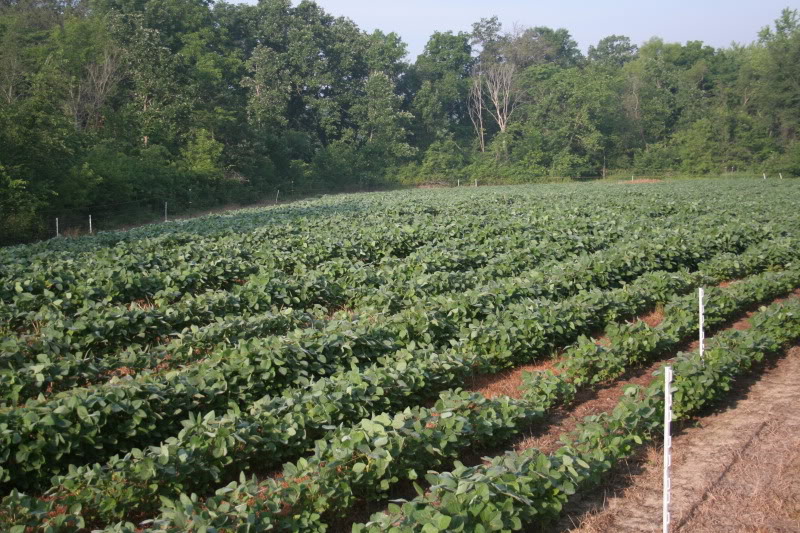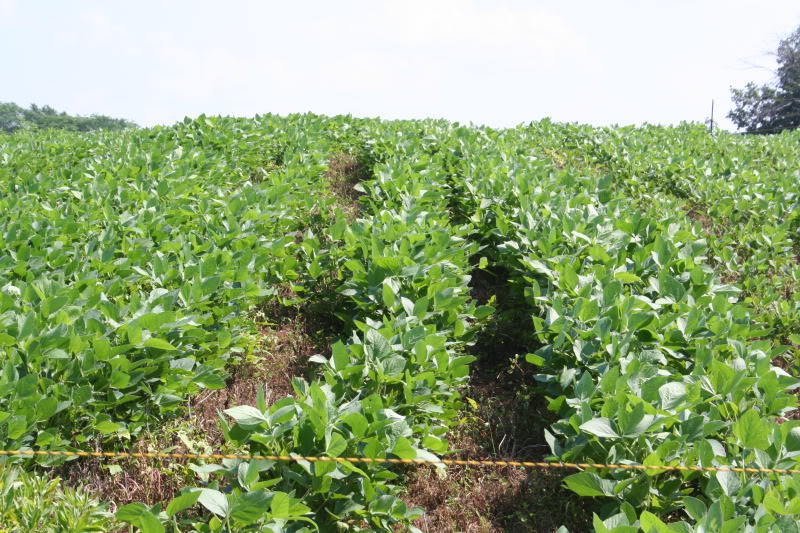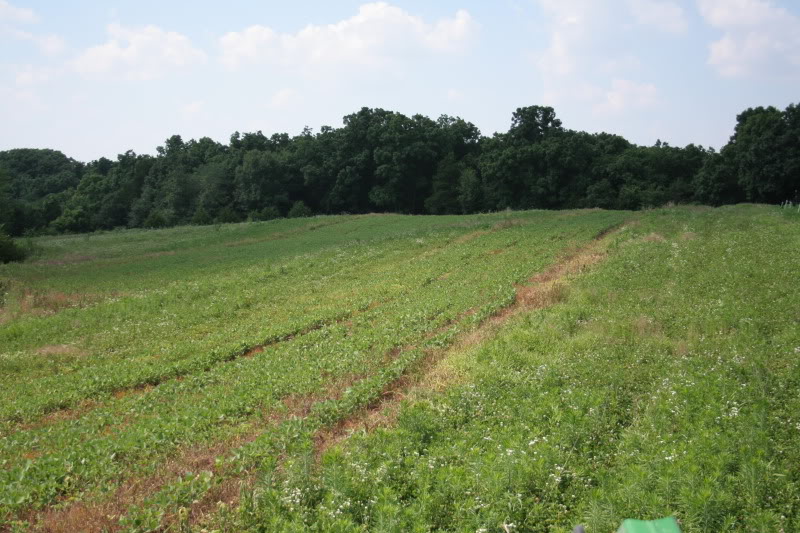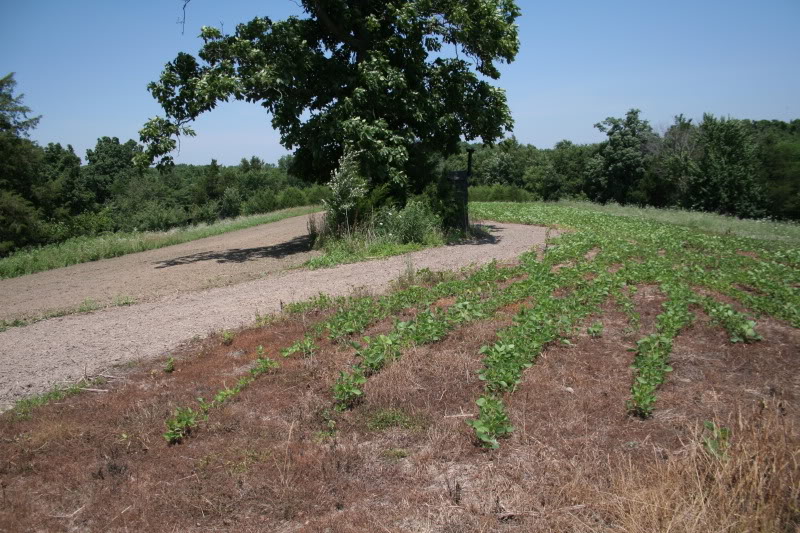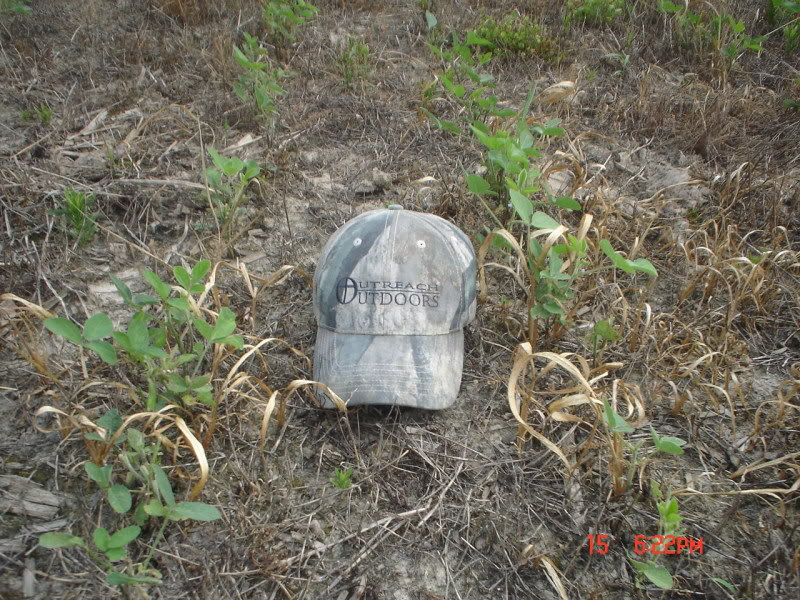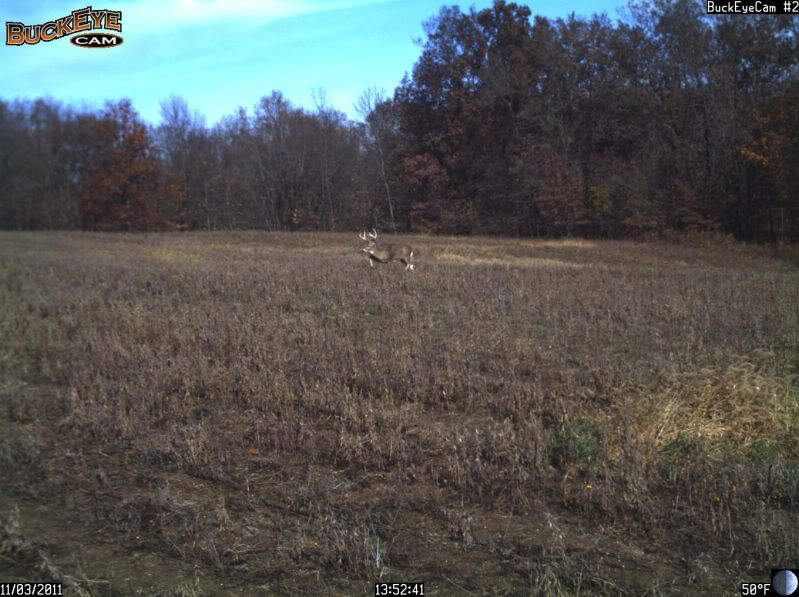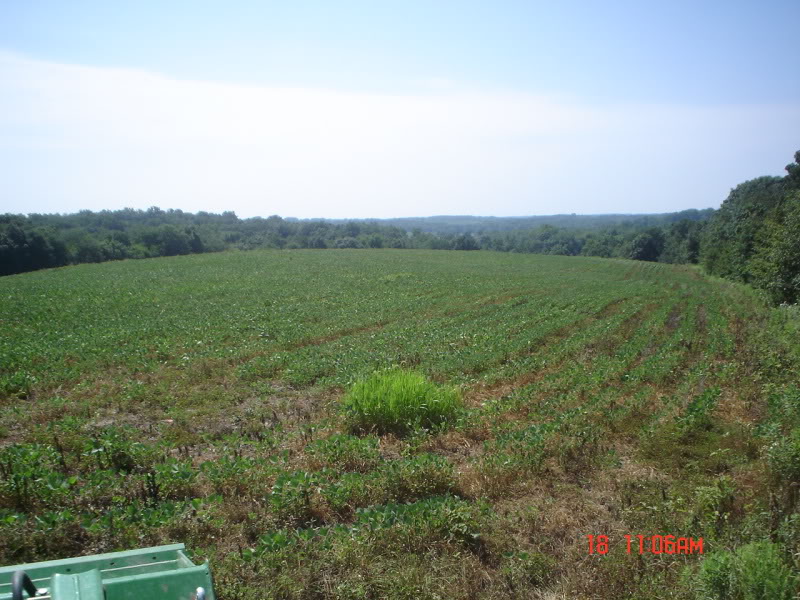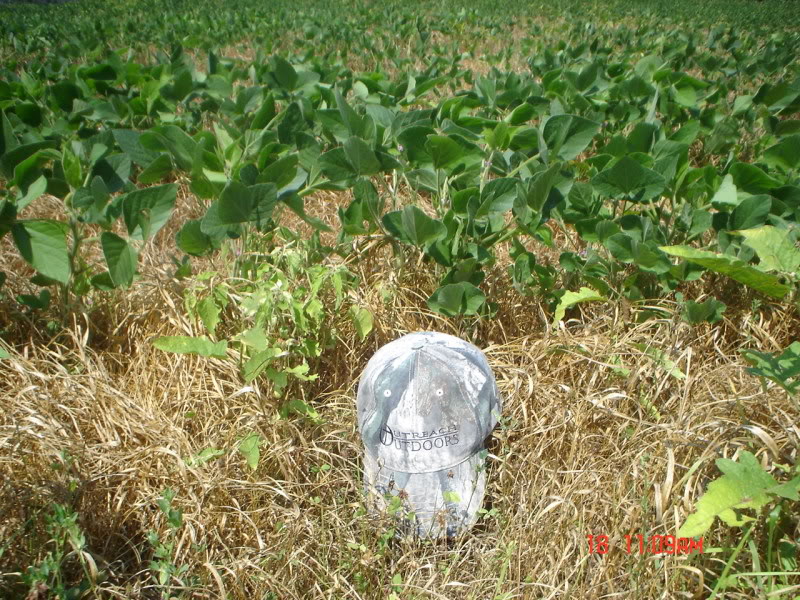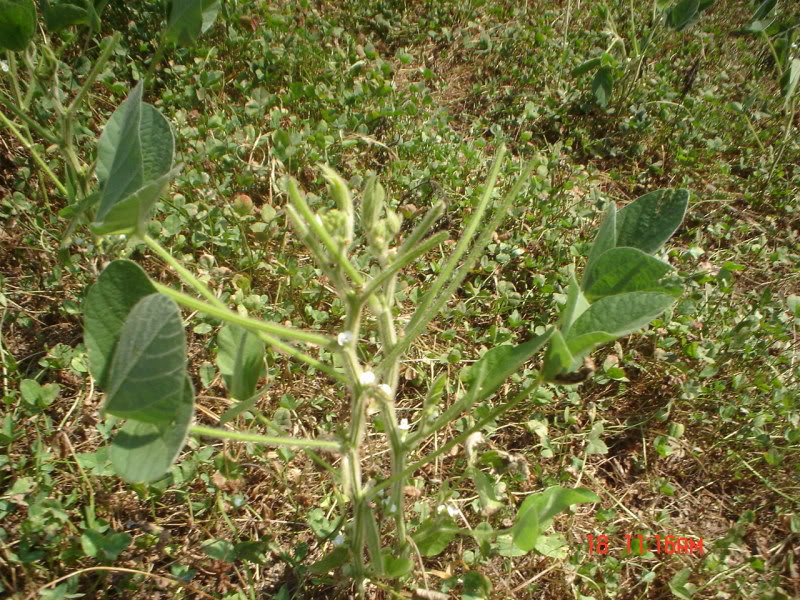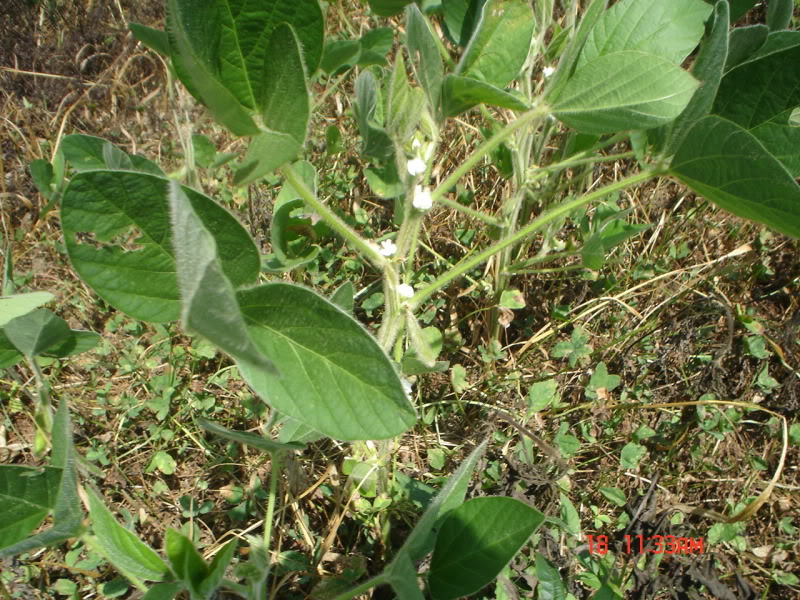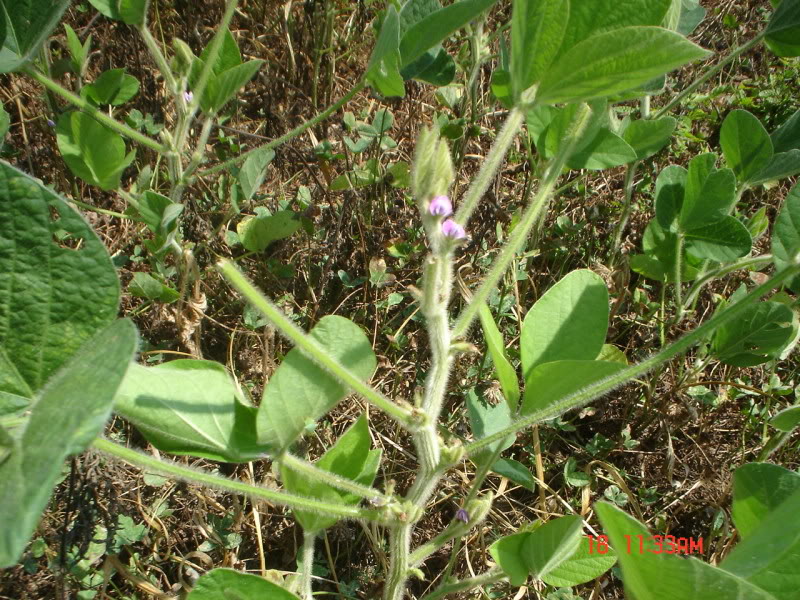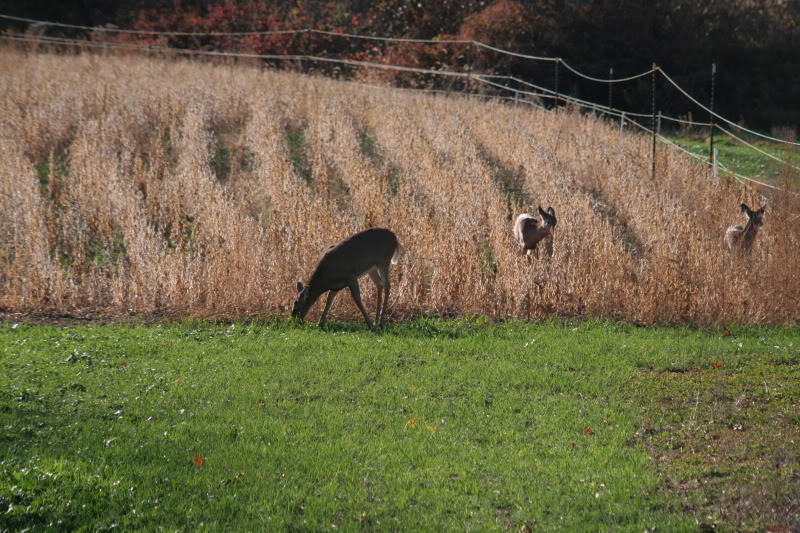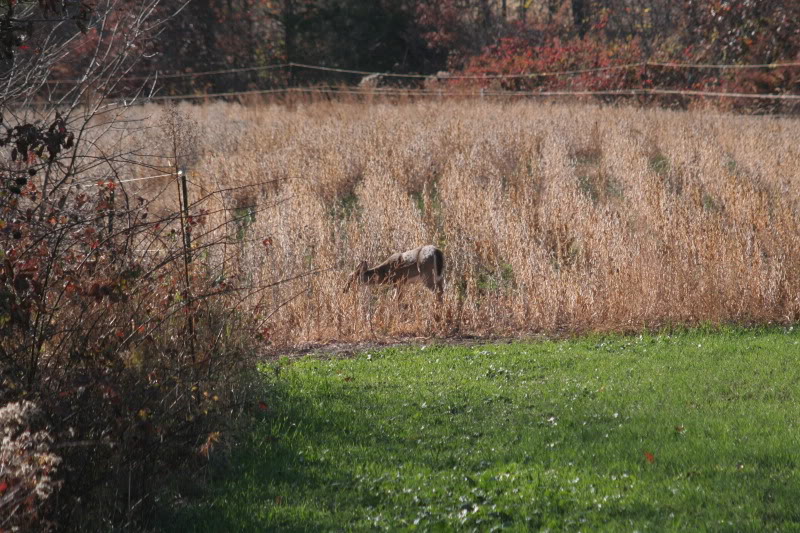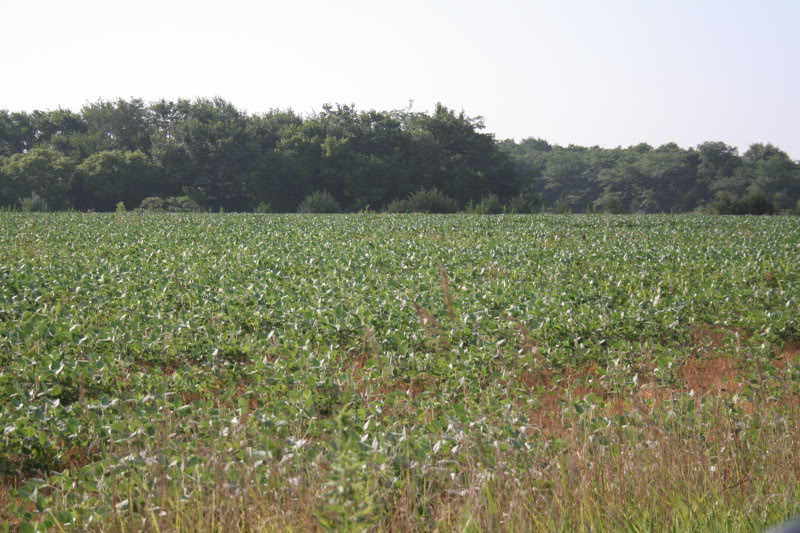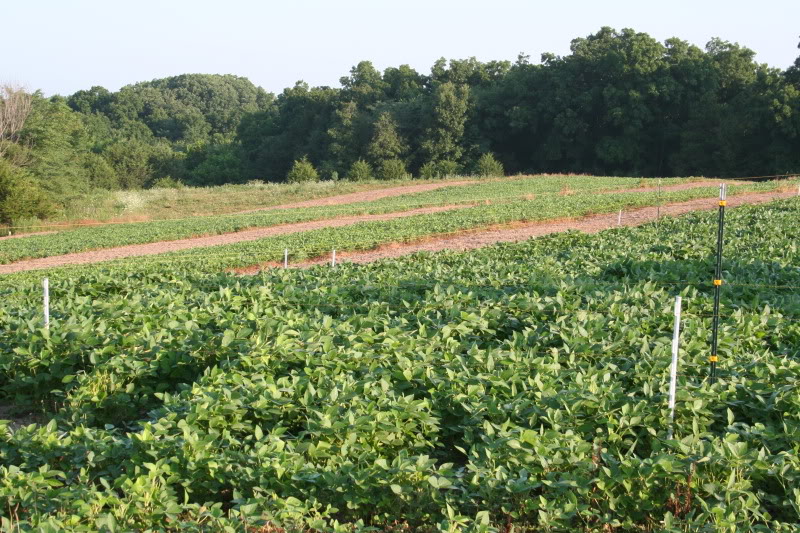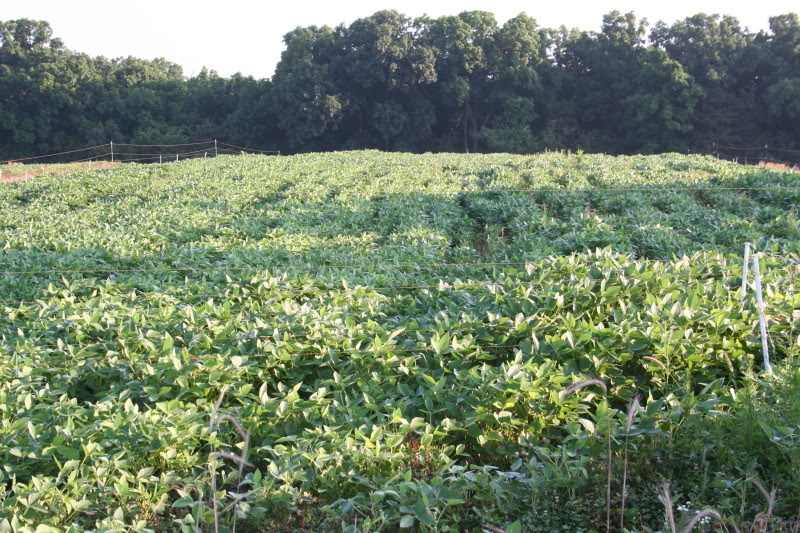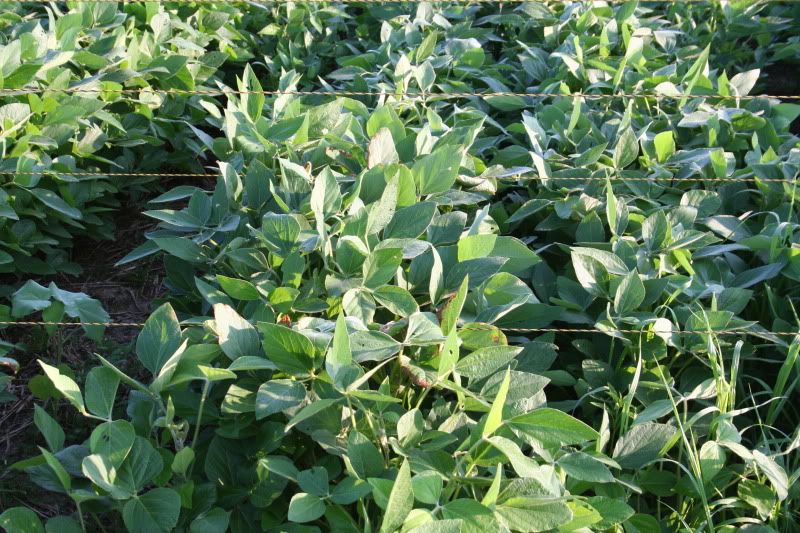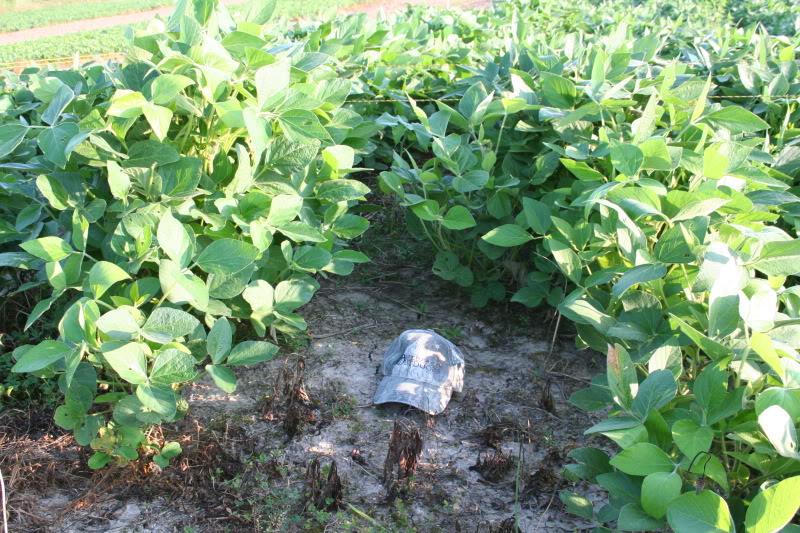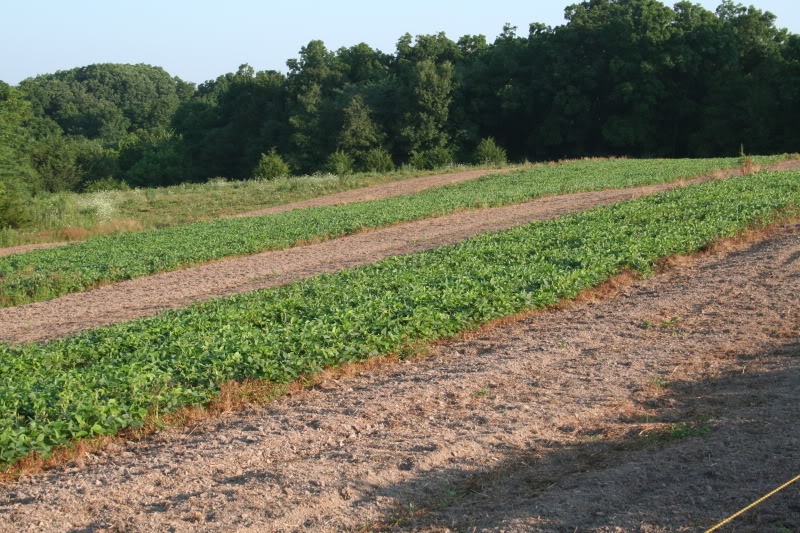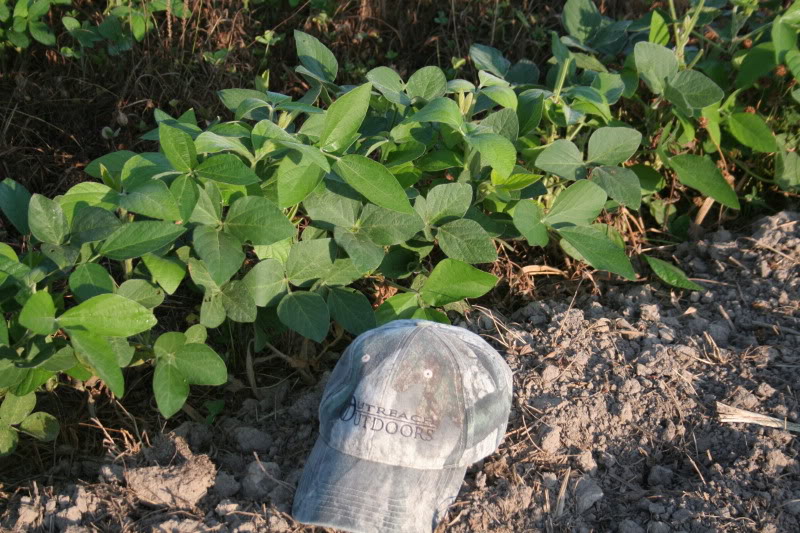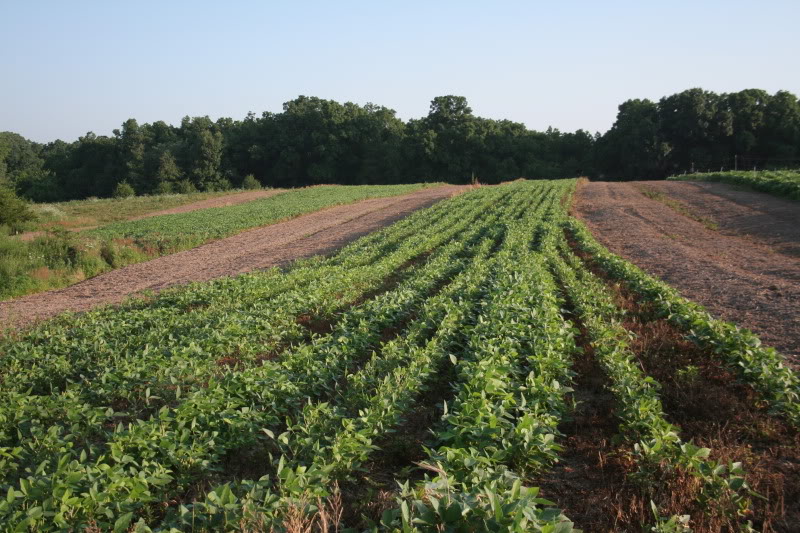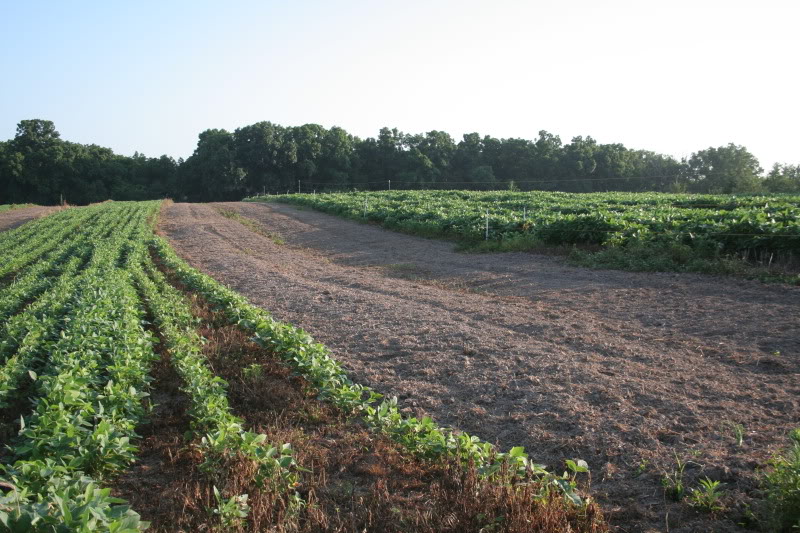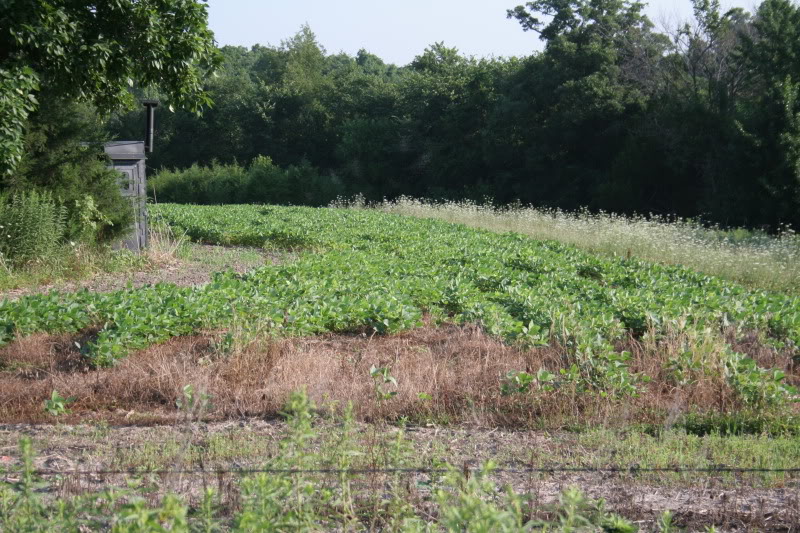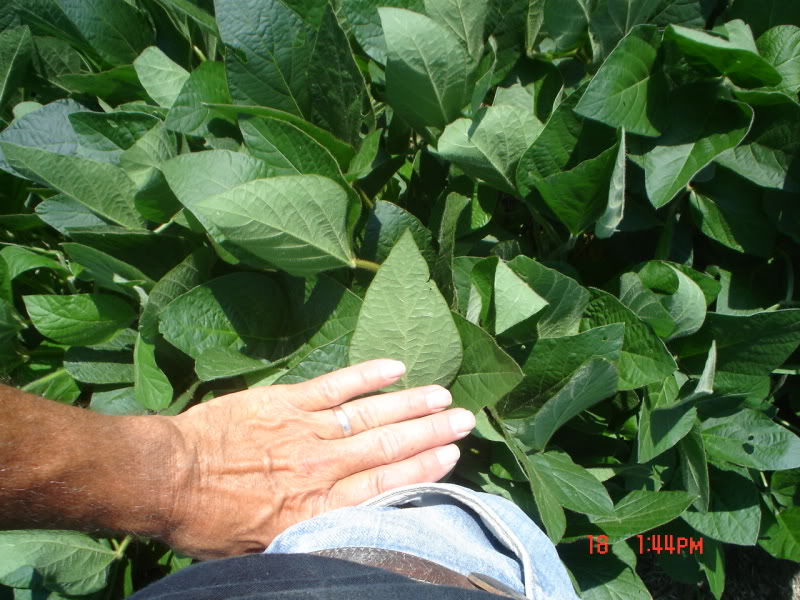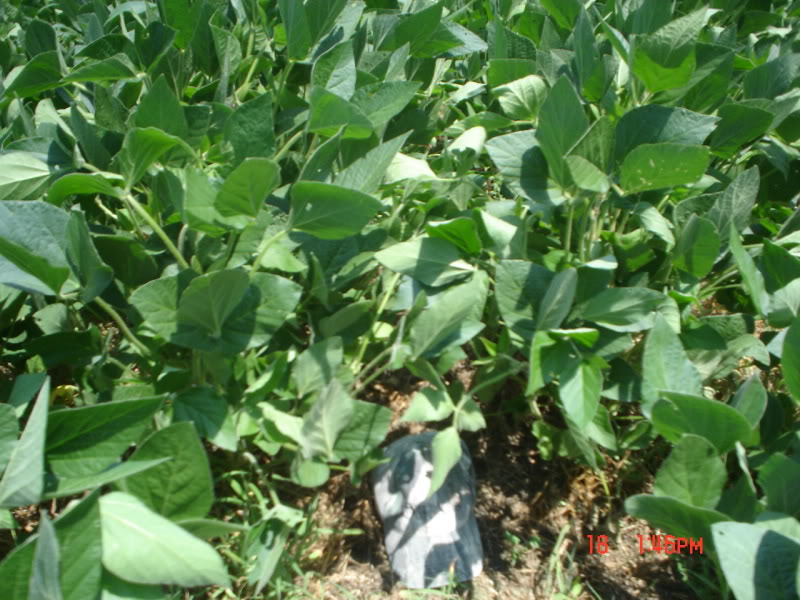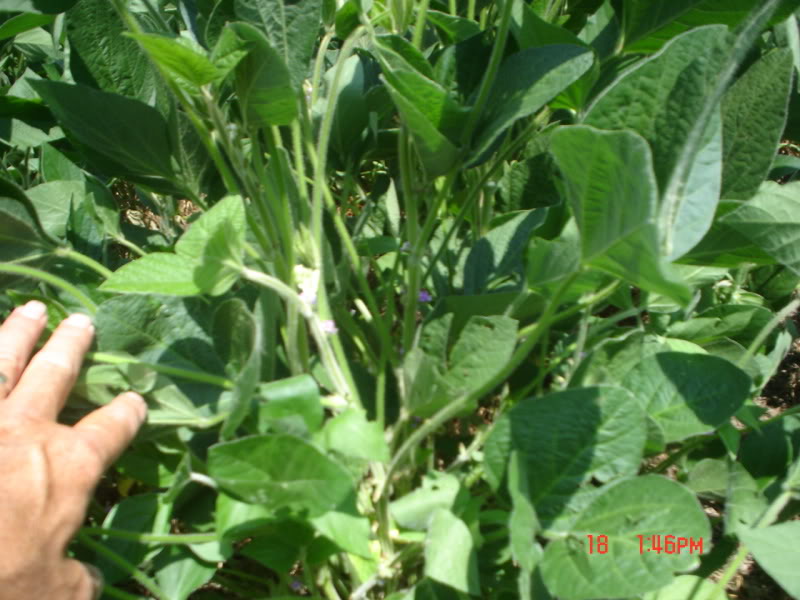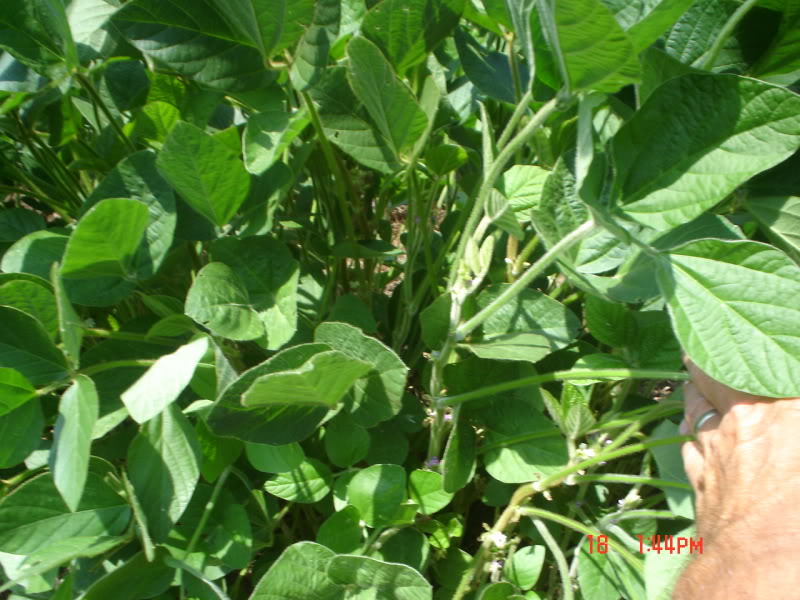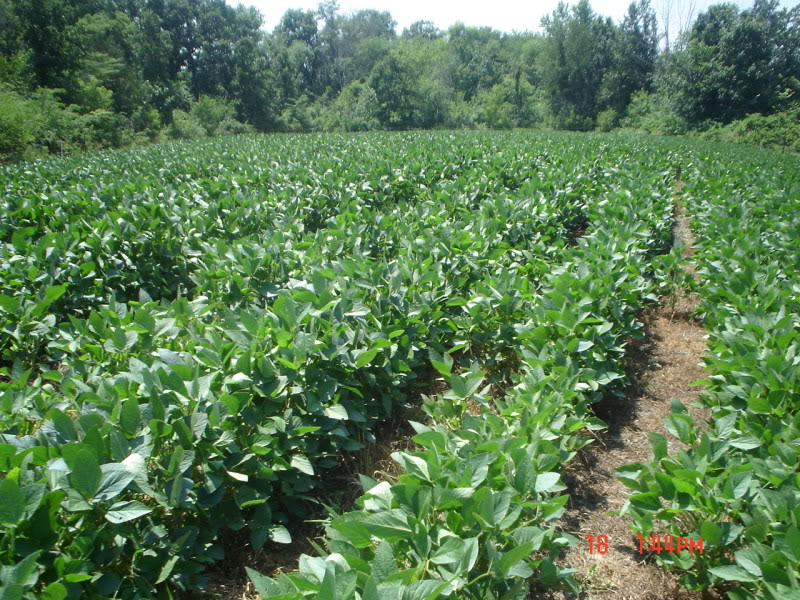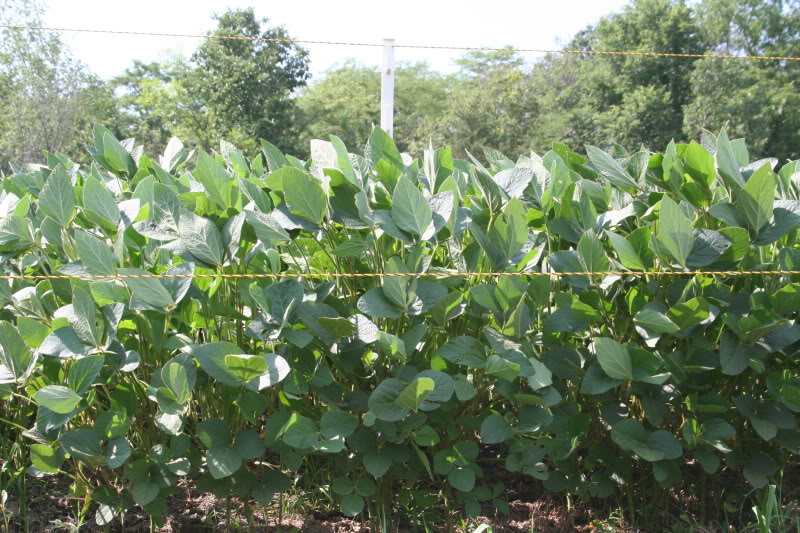July 24th, 2011
Some soybean updates from the past week starting with the worst to best on some of the farms I manage as well as my own.
The fields all were planted to the same ag beans with except for a test planting of Real World beans in one of my fenced plots, so the main factor here is deer grazing pressure and some fertility issues. The first pics are from a 3 acre field next to premium cover with no ag fields planted close by. The soil has been abused by poor farming practices so we are in the process of correcting that by building up soil nutrients and rotating crops.
These pics were taken on the 15th and the exclusion cage was not there from the beginning. Soil test called for 160#'s of K but the new landowner decided to only go with 120#'s of potash the first year. Basically these deans are done for...kaput!
On the same farm but in a larger 8 acre field with slightly better fertility the beans look better, heavy grazing pressure but the size of the field makes a big difference.
These pics from 7/18
Grazing was obviously on every single plant inspected across the 8 acres!
Some varieties were already forming pods
Here's Lee and Tif's beans for comparison on the 19th
and yet another farm that I plant where the landowner and I have engaged in a long term soil and habitat improvement battle to create the best of the best and we're making some giant strides towards that end.
This view shows both fenced and unfenced beans at his farm where no corners are cut in building soil nutrients through P&K and heavy ag lime applications along with constant crop rotations....the difference is astounding!
This pic from 7/19
Despite nearly drowning earlier the fenced beans are now canopied and very healthy!
This soil has been under a continuous rotation between brassicas and winter rye/clover plow downs all the while not cutting corners with fertilizer and lime.
What is even more amazing however is the fact that the unfenced beans, also in hidden fields, no crops near by...have NOT been wiped out! Planted next to strips of lush rye/red clover and perennial white clover that deer are adapted to eating, the beans have heavily grazed but not decimated as in the first pics!
The beans are healthy and growth is steadily outpacing grazing!
The strip beans were planted on the previous years dead brassica strips where normally we would plant oats and berseem, so the beans in essence became the "cover crop". They are serving their purpose well....feeding deer, keeping them adapted to feeding in that plot, keeping them from challenging the fenced beans and because they are Roundup Ready it allows us to keep "clean up" the strips. They will also keep deer from decimating newly planted brassicas in adjacent strips of tilled under red clover
These are my own fenced beans... on 7-18 they were roughly waist high
I fertilized with 450#'s of 6-28-28 at planting
Lush white clover outside the fence has helped keep deer from challenging the fence
These are Real World beans planted along side the ag soybeans in this plot
No real noticeable difference across the plot at this stage
These are from the same field on the 21st of July with temps at 99 degrees for more then a week, heat indexes ranging from 110-121 yet the soybeans are thriving!
All of the landowners I work with, including myself grow soybeans for grain production for a late season attraction. We use clovers for the main spring and summer food source and prefer high yielding beans as a part of our overall habitat program. When used in conjunction with other crop rotations and electric fence soybeans can be an extremely useful too but as the pictures reveal they can also be easily wiped out in fields under 10 acres if there are high deer numbers.
We are in the middle of the worst heat wave the midwest has seen in 5 years yet the soybeans are thriving and growing rapidly while other crops wither in the heat....another reason to plant diversified food sources within the same centralized feeding areas.... :way:


